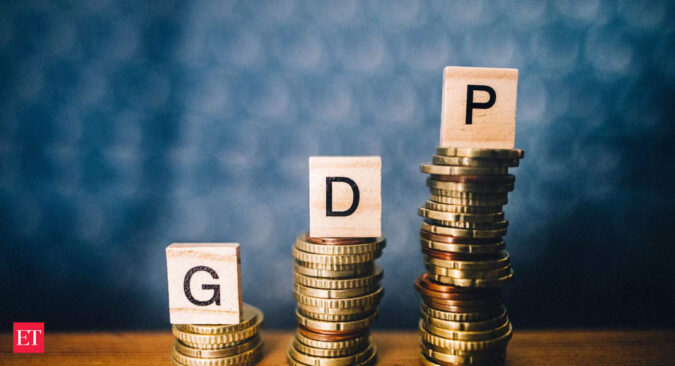The National Statistical Organisation will release the GDP data for Q4 and the full year 2022-23 tomorrow, May 31.
The fourth quarter is expected to surprise positively with economic growth predicted in a range of 4.1-5.7 per cent, with the median at 5.1 per cent, better than the last quarter’s 4.4 per cent. Icra expects growth to touch 4.9 per cent driven by an expansion in the services sector. It expects the services Gross Value Added (GVA) to have grown at 6.4 per cent from Q3’s 6.2 per cent.
“Lower commodity prices offered relief for margins in some sectors, while trends in investment activity and government spending were mixed. However, unseasonal rains are expected to have affected the rabi output of some crops, weighing upon the growth of the agri GVA,” said Aditi Nayar, Chief Economist, Icra.
“Most lead indicators that we track proved to be resilient in the March quarter, including vehicle registrations, e-way bill volumes, steel consumption, etc., besides revival in rural demand,” said DBS Bank senior economist Radhika Rao.
An ET poll of 20 economists pegged growth in the January-March period in the 4.1-5.7% range with the median at 5.1%, higher than the 4.4% recorded in the preceding quarter.
“In Q4 FY23, the strength in domestic consumption demand is supporting the growth,” said Rajani Sinha, chief economist, CareEdge.The bump up in Q4 GDP growth will give the full-year growth a fillip which is expected to surpass the 7% figure put out during the first advance estimates.
Reserve Bank of India (RBI) Governor Shaktikanta Das had recently expressed that the GDP growth during FY23 could surpass the earlier estimates of 7%. He noted that the economic momentum was sustained in the fourth quarter as is evident by the high-frequency indicators. The RBI paused its rate hike cycle in April and is expected to continue with that in the next policy review as inflation moderates. Das said that the RBI will have to monitor the impact of the 250 basis points rate hike so far as monetary policy works with a lag.
The better-than-expected growth in the fourth quarter comes amid a backdrop of a gloomy global scenario as the advanced economies struggle with challenges like high-interest rates and stubborn inflation.
The domestic consumption story has likely done the heavy lifting amid private sector investment remaining somewhat subdued and some momentum being provided by government spending.
